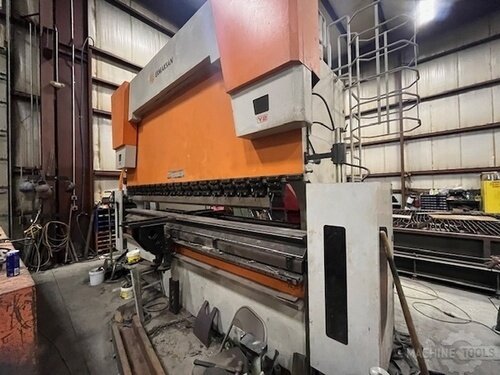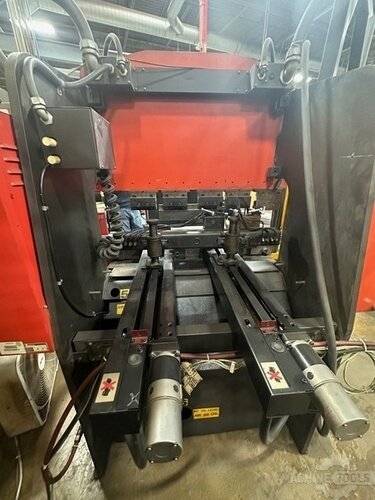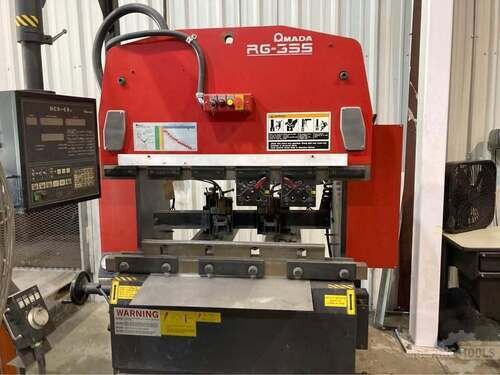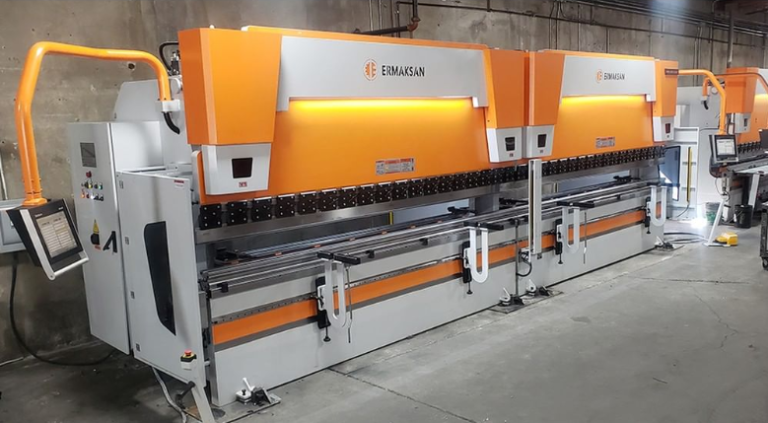Ermaksan Tandem Press Brakes: Section 179 Write-Offs for Shipyards & Wind Farms
As President of Mac-Tech, I help fabricators translate capital investments into predictable returns. The most resilient shops and yards plan capacity with the same rigor they apply to safety and quality. Ermaksan tandem press brakes give contractors the flexibility to win bigger work across sectors while Section 179 write-offs turn that flexibility into near-term cash flow. My role is to align the machine, the financing, and the timeline so your P&L benefits immediately and your long-term plan stays on track.
Section 179 as a CapEx Catalyst: Maximize Year-end Deductions and Cash Flow with Ermaksan Tandem Press Brakes
Section 179 can convert a strategic equipment need into a year-end tax advantage. For many clients, expensing qualified equipment in the year it is placed in service shortens payback and boosts cash flow in the first twelve months. When we pair that with financing structures that match payments to productivity, the investment becomes self-funding faster. Tandem press brakes are a strong candidate because they directly expand revenue capacity and compress lead times on high-value, long-length parts.
We regularly map out purchase dates, delivery windows, and commissioning milestones to ensure eligibility for year-end deductions. In many cases, bonus depreciation can further accelerate cost recovery. Your tax advisor should confirm current limits and your specific eligibility. Our team focuses on aligning procurement and installation schedules so you can place the machine in service before your fiscal cutoff and capture the deduction while maintaining a controlled ramp to full production.
Scale for Shipyards and Wind Farms: Long-bed Synchronization and High Tonnage for Hulls, Bulkheads, and Tower Cans
Ermaksan tandem press brakes synchronize two CNC press brakes to operate as a single long-bed system or as independent machines. Typical configurations pair two long beds to achieve 40 to 60 feet of working length with total tonnage in the high hundreds to several thousand tons depending on model selection. Each machine uses independent Y1 and Y2 hydraulic axis control for precise ram positioning, then the tandem link keeps both rams in step across the full length. This long-bed synchronization maintains angle consistency from end to end, which is critical for hull sections, bulkheads, and segmented tower cans.
For offshore wind tower sections and transition pieces, the combination of high tonnage, CNC crowning, and multi-axis backgauges supports consistent bends on thick plate and long seams. For shipyards, the same tandem setup handles deep frames, stiffeners, and large bulkhead panels without segmenting the part. Optional sheet followers and front supports make handling heavy plate safer and more repeatable, and the machines can be decoupled for standard jobs when the long bed is not required. The result is a platform that adapts across programs and seasons, keeping utilization high.
HEAVY DUTY
TANDEM PRESS BRAKE
Operational Uplift That Hits the P&L: One-pass Bending, Fewer Setups, Reduced Crane Moves, and Safer Plate Handling
Moving from segmented bending to one-pass bending changes the floor rhythm. With tandem capacity, long parts that once required multiple setups and crane moves can be bent in a single sequence. That reduces non-cutting time and limits accumulated error from repositioning. The immediate effects are shorter cycle times and fewer reworks, which drop straight to gross margin. Crew coordination improves because the brake becomes the constraint you can plan around instead of a bottleneck you have to work around.
Safety and ergonomics improve as well. Long plates are supported by dedicated sheet followers and front supports rather than improvised fixtures or multiple rigging steps. That cuts touchpoints and operator fatigue. It also standardizes handling across shifts, which supports consistent angles and surface quality. You get better parts, less lifting, and a calmer, more predictable work cell.
Executive ROI Model: Cycle Time Cuts, Labor Reallocation, Scrap Reduction, Energy Efficiency, and Bonus Depreciation
A practical ROI model starts with time. If a 40-foot bulkhead that took three handling steps now runs in a single pass, you often see a double-digit reduction in total cycle time. Multiply that by weekly volume and you get available hours you can redeploy to higher-margin work. Those hours can be translated into either throughput gains or labor reallocation to critical path tasks elsewhere in the yard. Combine that with less rework and scrap due to fewer setups, and your cost per part falls while your on-time delivery rate improves.
Modern Ermaksan hydraulics and control packages are designed for efficiency. Variable-speed pump technology and intelligent standby modes reduce energy draw when the ram is idle. Over a year, energy savings contribute meaningfully to the operating side of ROI, especially on long-bed, high-tonnage systems. From a finance perspective, Section 179 and potential bonus depreciation improve after-tax cash flow in the first year. When we model projects, we include productivity gains, reduced scrap, expected energy savings, and tax impacts to show payback and NPV under conservative and aggressive utilization scenarios.
Digital Advantage from Ermaksan: Advanced CNC, Offline Programming, IoT Monitoring, and Traceability for OEE gains
Ermaksan tandem brakes ship with advanced CNC controls such as Delem DA series or comparable platforms, enabling precise control of Y1 and Y2, crowning, and multi-axis backgauge movements. Offline programming lets your team import models, simulate bending sequences, verify clearances, and push proven programs to the floor. That shortens new part introduction and helps standardize best practices across shifts and locations.
Connectivity options support real-time monitoring, program traceability, and data capture for OEE improvement. You can track cycle counts, idle time, alarms, and operator changeovers, then feed that data into your MES or quality system through standard protocols. Barcode or QR code program calls reduce selection errors and tie each part to its digital traveler. When leadership has visibility into utilization and causes of downtime, continuous improvement becomes far more targeted and effective.
Mac-Tech as a Growth Partner: Application Engineering, Financing Guidance, Turnkey Install, Training, and Lifecycle Support
Mac-Tech pairs equipment with application engineering so your bend strategy fits your parts, not the other way around. We review drawings, propose tooling packages, validate bending sequences, and recommend accessories like sheet followers or extended backgauges. Our goal is to deliver a system that is productive on day one and scalable as your mix changes.
We also help navigate financing and timing. Whether you use a capital purchase, an equipment finance agreement, or an operating-style lease with a fair market value option, we coordinate with your tax and finance teams to align payments, Section 179 timing, and commissioning. Our installers handle foundation guidance, electrical requirements, and tandem synchronization. After install, we train operators and maintenance staff, then back you with parts, remote support, and scheduled preventive maintenance to protect uptime over the life of the machine.
FAQ
What market trends are driving demand for tandem press brakes in shipyards and wind?
Longer part lengths, thicker plate, and tighter lead times are converging. Offshore wind tower sections and large hull components require consistent long-bed bends, which tandem brakes deliver without stitching smaller bends together.
How do I plan CapEx to capture Section 179 while avoiding production disruption?
Back-plan from your fiscal cutoff. Lock the purchase order, confirm lead times, and schedule delivery and commissioning with buffer for site prep. We design the transition so your existing brake keeps running until the tandem is ready to go live.
Can tandem brakes integrate with my current tooling and programs?
In many cases yes. Standard tooling systems can be used, and programs can be migrated or rebuilt via offline software. We evaluate tooling height, clamping, and crowning requirements up front to ensure compatibility.
What financing structures work best for year-end tax planning?
Equipment finance agreements and $1 buyout leases maintain many of the tax benefits of ownership, while fair market value leases can lower monthly payments. Your advisor should confirm treatment, and we align terms to your cash flow targets.
What automation options have the fastest ROI on large parts?
Sheet followers, front supports, and robust backgauge axes typically pay back fastest on heavy plate. Full robotic handling of very large parts is possible but requires a broader integration and is justified when volumes and part mix are stable.
If you would like to discuss an ROI model tailored to your parts and schedule a plant review, reach me directly.
Joe Ryan, President, Mac-Tech
joe@mac-tech.com | 414-477-8772
Get Weekly Mac-Tech News & Updates









